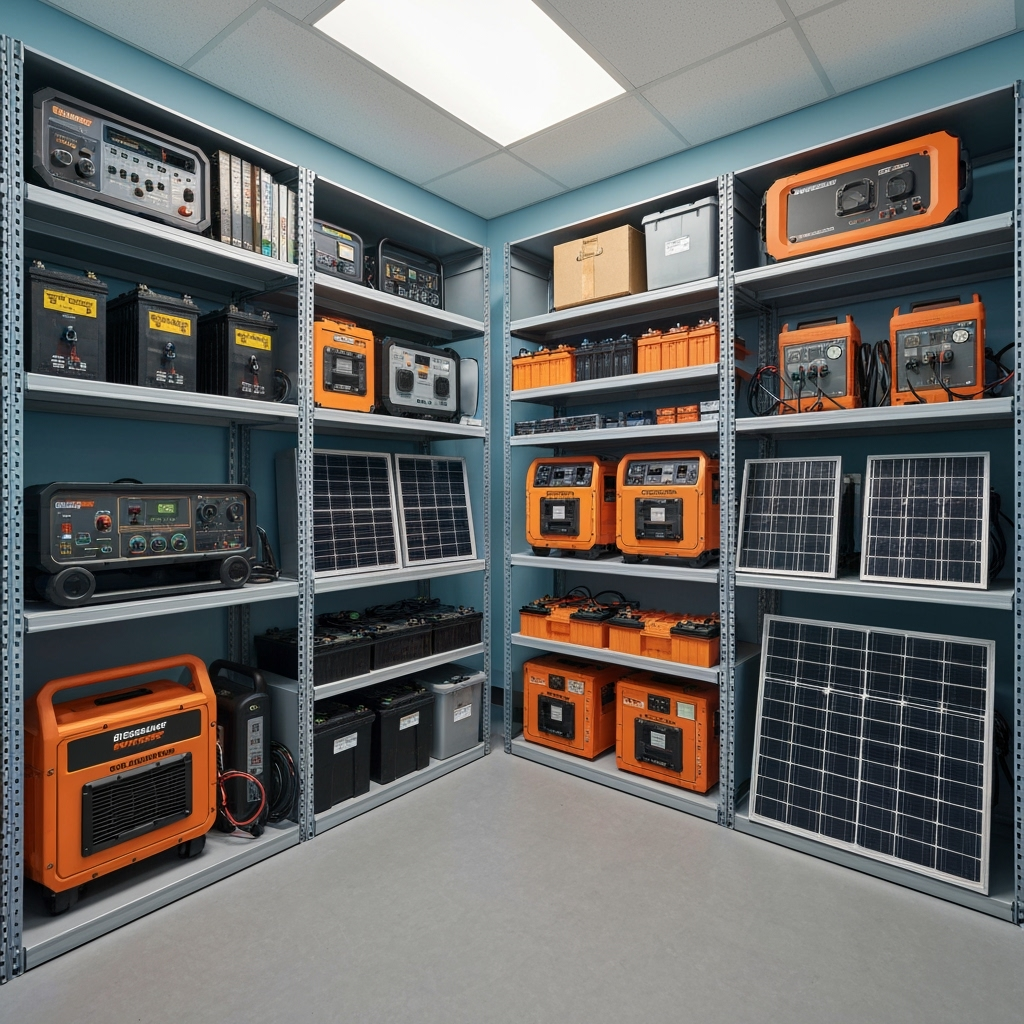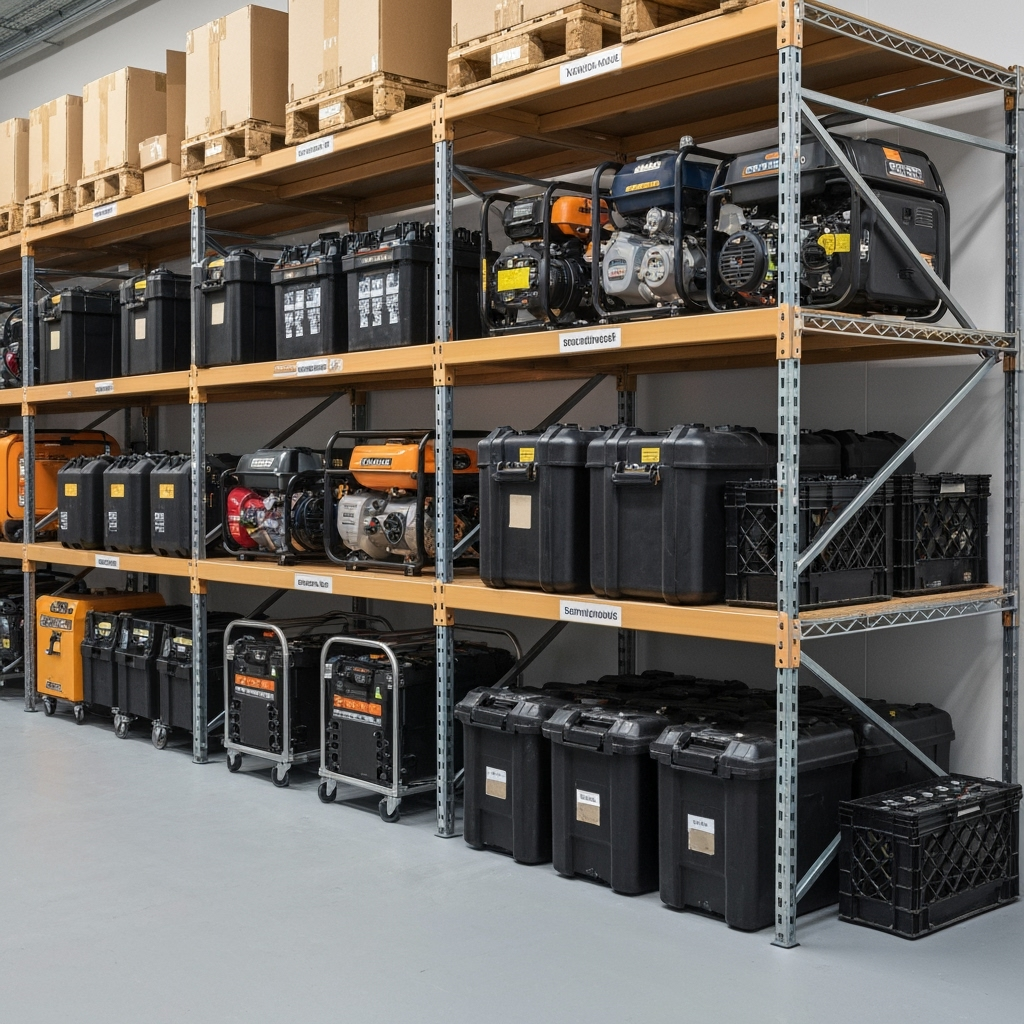
The Critical Need for Emergency Power Storage in Remote Work
As remote work becomes increasingly prevalent, maintaining uninterrupted power for your home office is no longer just a convenience—it’s a necessity. This comprehensive guide will help you properly store and maintain emergency power solutions to ensure business continuity during unexpected outages.
Choosing the Right Storage Space for Power Equipment
Your emergency power equipment requires specific storage conditions to maintain optimal performance and longevity. Here’s what you need to consider:
- Temperature control: Keep batteries and power stations in environments between 40-80°F
- Humidity control: Maintain relative humidity between 45-55%
- Ventilation: Ensure proper air circulation to prevent battery degradation
- Accessibility: Easy access for regular maintenance and emergency situations

Essential Equipment Storage Guidelines
1. Portable Power Stations
Store portable power stations on sturdy shelving with these considerations:
- Keep units elevated off the ground
- Maintain partial charge (40-80%) during storage
- Use protective covers to prevent dust accumulation
- Label with capacity and maintenance schedules
2. Battery Backup Systems (UPS)
Proper UPS storage requires:
- Climate-controlled environment
- Regular testing schedule
- Proper cable management
- Clear labeling of backup duration and capacity
Organizing Your Emergency Power Storage
Create Zones for Different Equipment Types
Organize your storage space into distinct zones:
- Primary power solutions (generators, power stations)
- Backup batteries and UPS systems
- Cables and accessories
- Maintenance supplies and tools
Maintenance and Testing Protocols
Regular Maintenance Schedule
Implement a consistent maintenance routine:
- Monthly equipment inspections
- Quarterly battery checks
- Bi-annual full system tests
- Annual professional assessment
Safety Considerations
Prioritize safety in your emergency power storage setup:
- Install fire safety equipment nearby
- Use proper ventilation systems
- Keep equipment away from water sources
- Maintain clear access paths
- Post safety protocols visibly
Documentation and Inventory Management
Maintain detailed records of your emergency power equipment:
- Equipment specifications and manuals
- Maintenance logs and schedules
- Testing results and performance data
- Contact information for technical support
Emergency Response Plan
Create a clear emergency response plan that includes:
- Step-by-step power activation procedures
- Equipment deployment checklist
- Emergency contact numbers
- Troubleshooting guides
Conclusion: Ensuring Business Continuity
Proper storage and maintenance of emergency power solutions is crucial for remote work success. By following these guidelines, you’ll ensure your backup power systems are ready when needed, maintaining productivity during unexpected power disruptions.
Remember to regularly review and update your storage system as your power needs evolve, and always prioritize safety and organization in your emergency power storage setup.










Leave a Reply